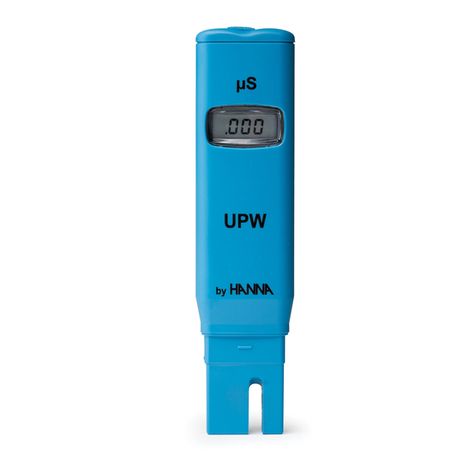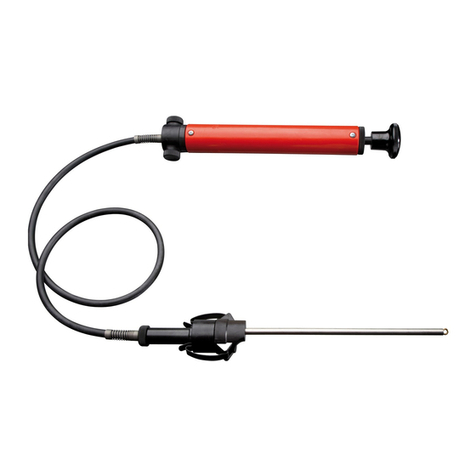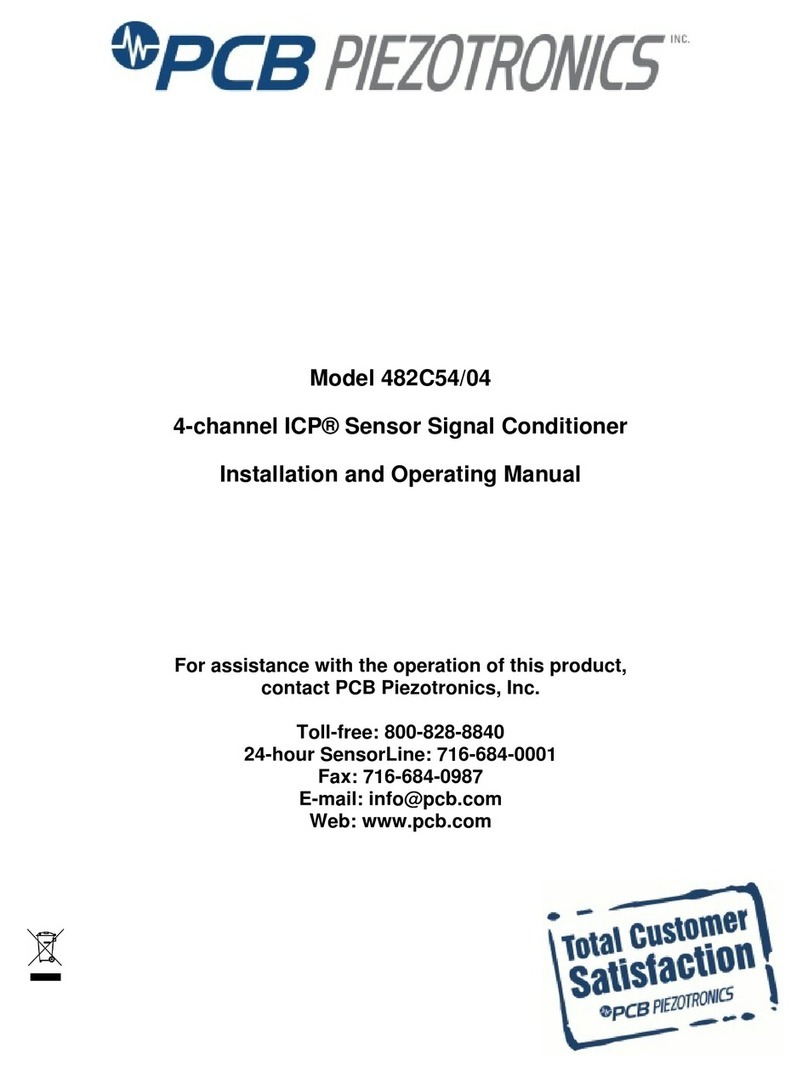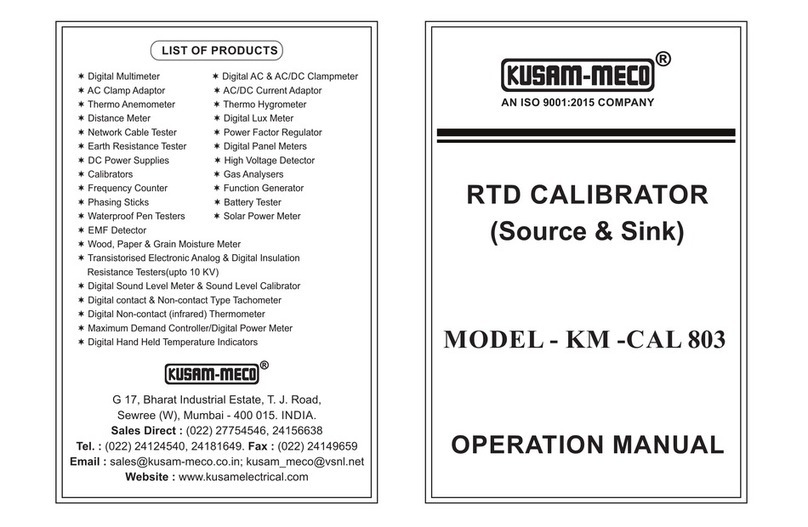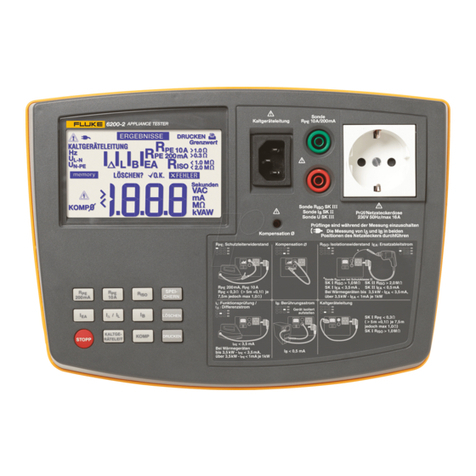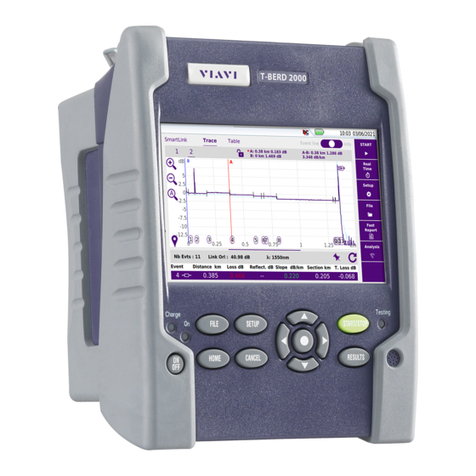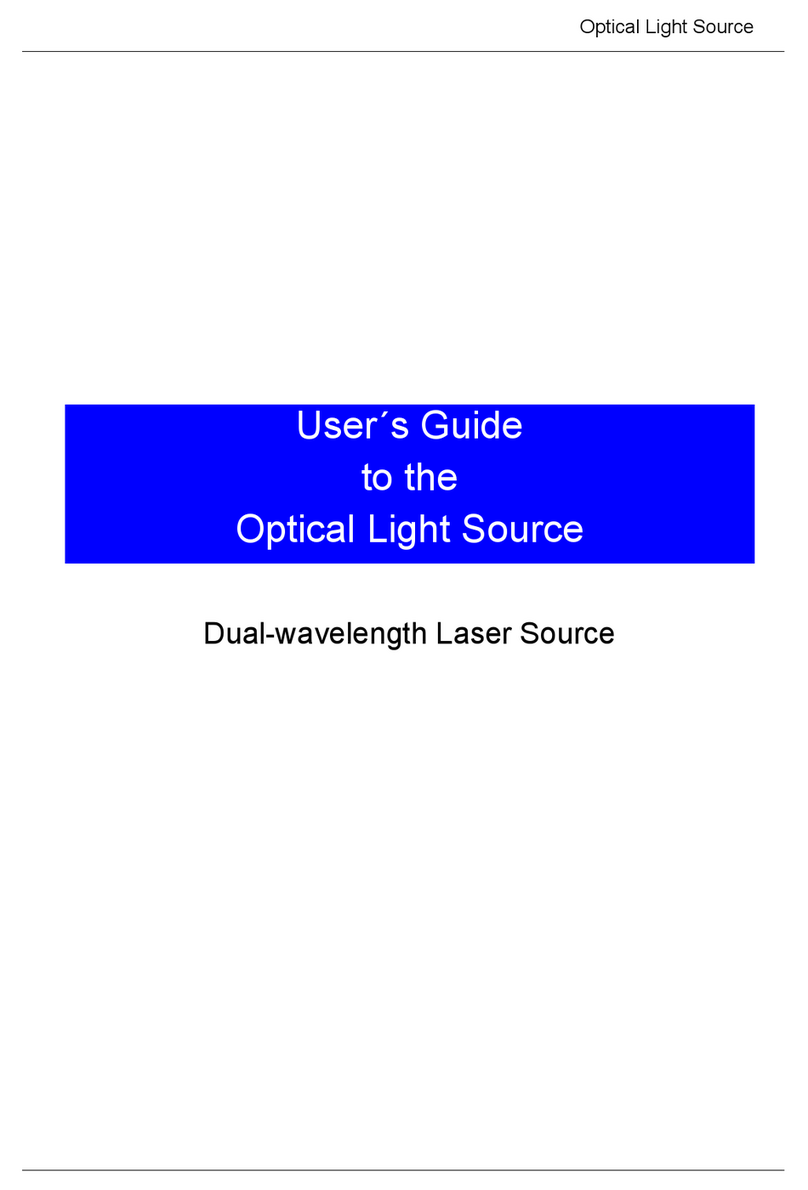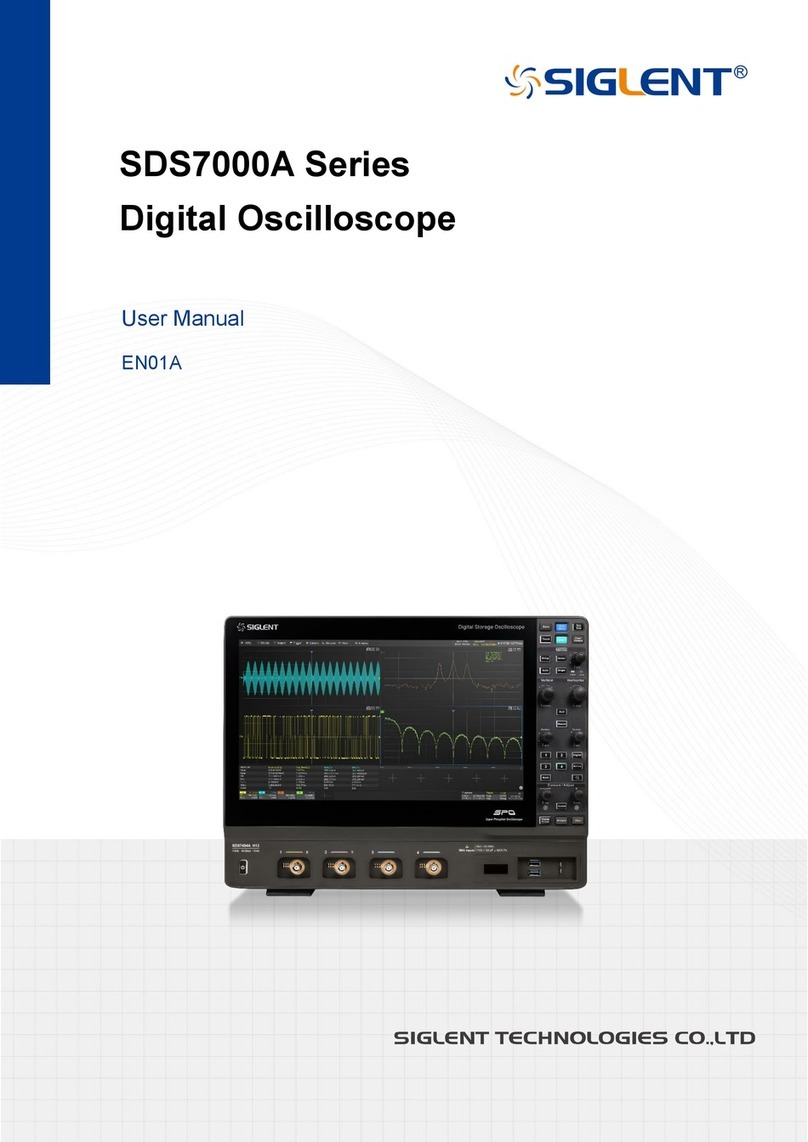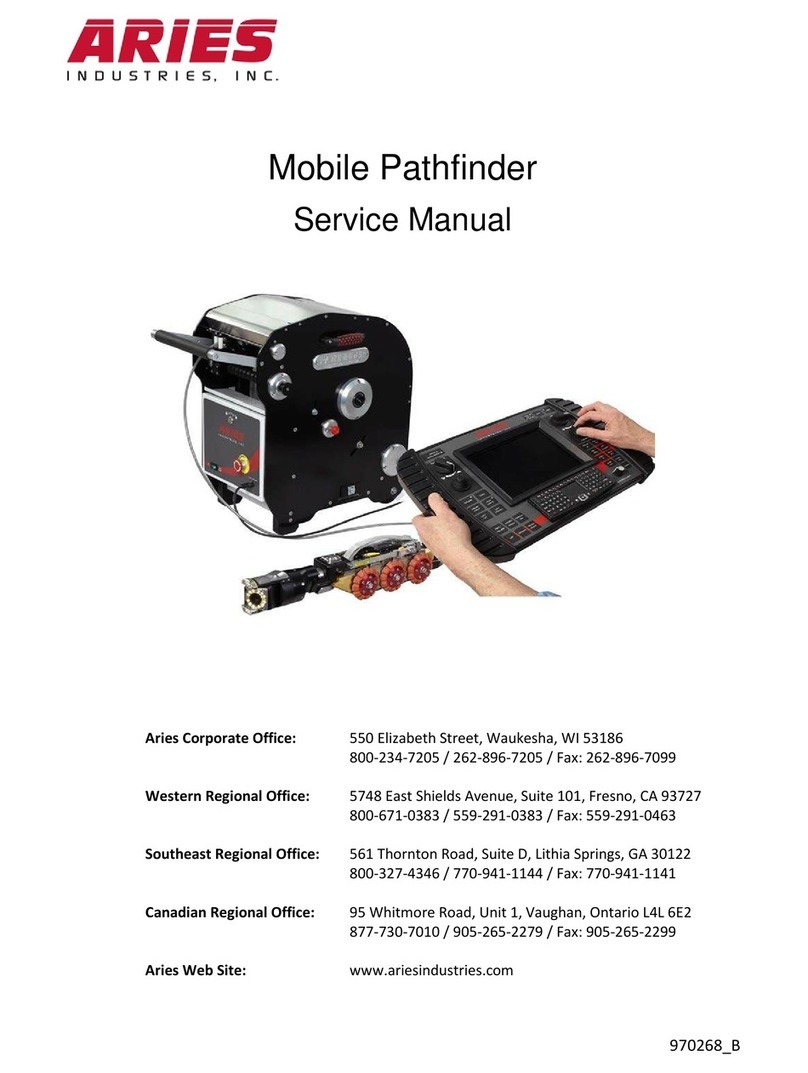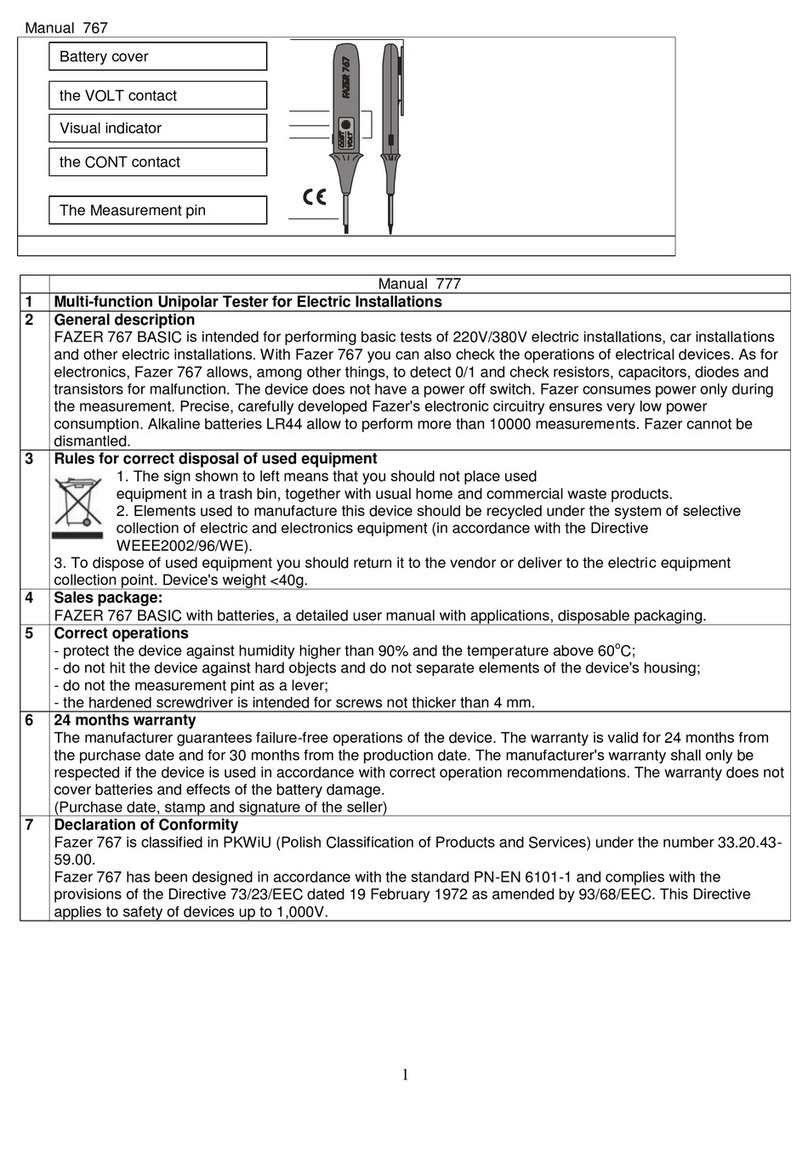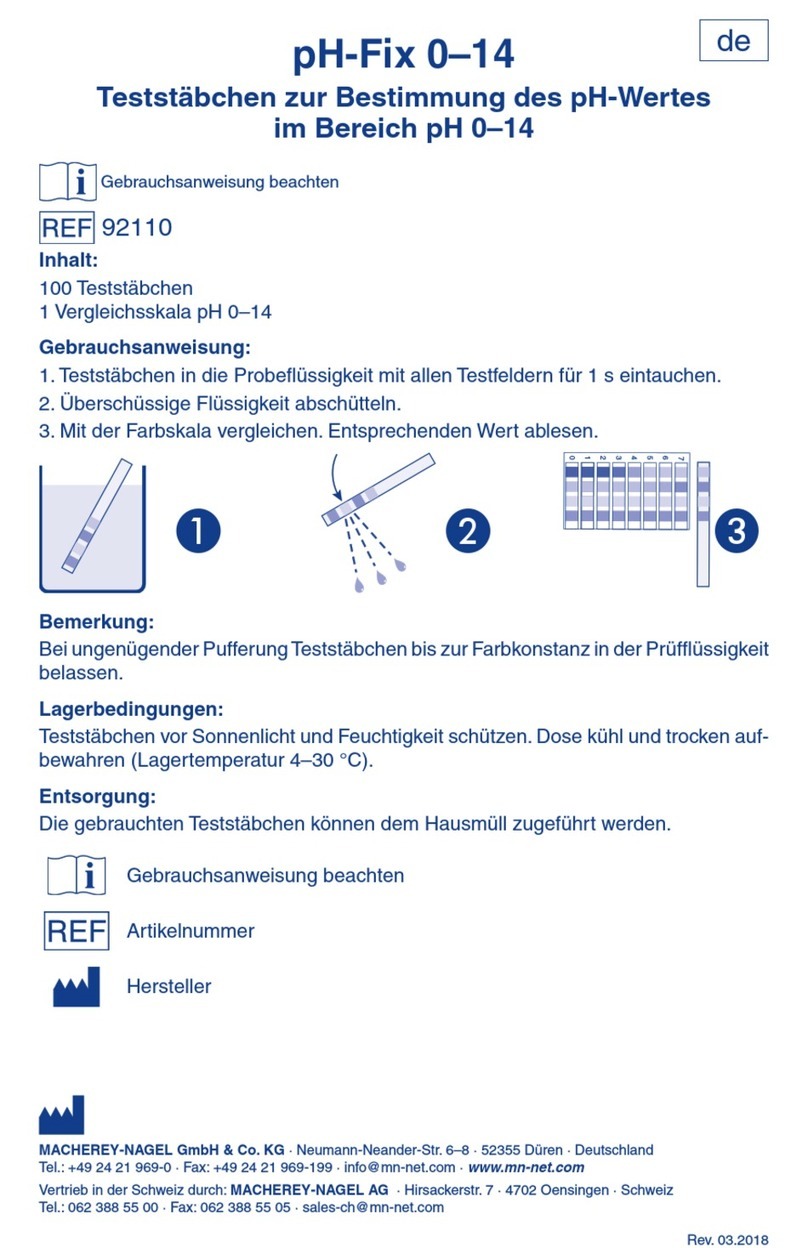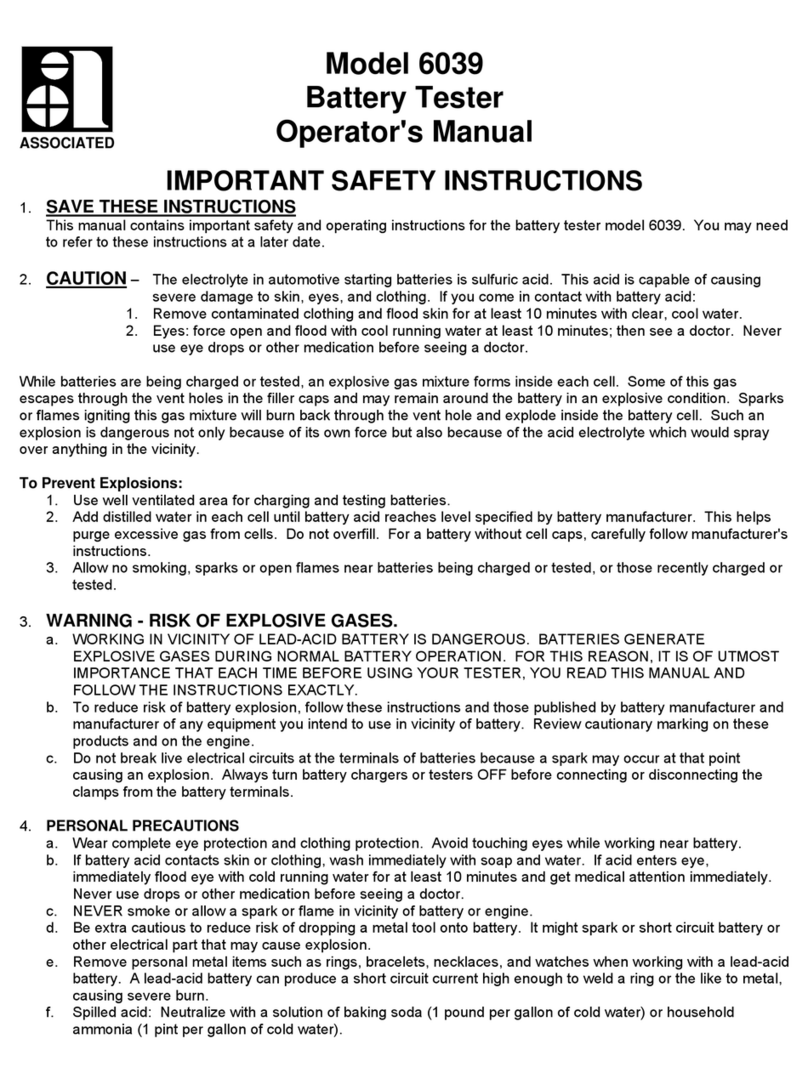MPB PIRS Instruction manual

MPB S.r.l.
Via Giacomo Peroni 400/402
00131 Rome - Italy
www.gruppompb.uk.com
Quick start Manual PIRS
Quick Start Manual
PIRS
Quick start Manual Version: 1.1
Updated to the Software Version: 1.0.0
Updated to Firmware Version: 1.01

QUICK START MANUAL
PIRS
- 2 -
SAFETY NOTES
Read before using the product
MPB works to provide the best safety conditions available and complies with the latest safety
standards.
The instrumentation described in this manual was produced, tested and left the factory in
conditions that fully comply with European standards.
To ensure the correct use of the product, these general instructions must be read and
applied before and for any use of the instrumentation.
The PIRS is made for industrial environments and should be used by authorized staff only.
MPB disclaims any responsibility for a use of the device different from explained in the
manual.
In order to keep the 24 months warranty, please do not remove the seals of the instrument.

QUICK START MANUAL
PIRS
- 3 -
Declaration of conformity
(according to EMC 89/336/EEC directive and low voltage 73/23/EEC)
This is to certify that the product: PIRS
complies with the following European standards:
Safety: EN 61010-1 (undated reference, applies to all editions)
EMC emissions: EN 61326-1 (undated reference, applies to all editions)
EMC immunity: EN 61326-1 (undated reference, applies to all editions)
This product complies also with the 2014/35/CE Low voltage directive
requirements and with 2014/30/EU Electromagnetic compatibility
and with R0HS 2011/65/EU
MPB S.r.l.

QUICK START MANUAL
PIRS
- 4 -
Index
1. General information .............................................................................................................................. - 5 -
1.1. Introduction................................................................................................................................... - 5 -
1.2. System description ........................................................................................................................ - 5 -
1.3. System composition and optional accessories.............................................................................. - 5 -
1.4. Technical specifications ................................................................................................................. - 6 -
2. Operating principles .............................................................................................................................. - 7 -
2.1. Block diagram ................................................................................................................................ - 7 -
2.2. Working principles of PIRS............................................................................................................. - 7 -
3. Software ................................................................................................................................................ - 8 -
3.1. Installation..................................................................................................................................... - 8 -
3.2. Connecting the instrument.......................................................................................................... - 10 -
3.3. New list creation.......................................................................................................................... - 11 -
3.4. Edit list ......................................................................................................................................... - 11 -
3.5. Delete list..................................................................................................................................... - 11 -
3.6. Delete frequency ......................................................................................................................... - 11 -
3.7. Add frequency ............................................................................................................................. - 12 -
3.8. Delete all frequency from list ...................................................................................................... - 12 -
3.9. Wizard table ................................................................................................................................ - 12 -
4. Calibration ........................................................................................................................................... - 13 -
4.1. General ........................................................................................................................................ - 13 -
4.2. Quiet zone pre-saved .................................................................................................................. - 13 -
4.3. Quiet zone with sample probe .................................................................................................... - 13 -
5. Measures ............................................................................................................................................. - 14 -
5.1. setup ............................................................................................................................................ - 15 -
- Turn on the PIRS .............................................................................................................................. - 15 -

QUICK START MANUAL
PIRS
- 5 -
1.General information
1.1. Introduction
The PIRS (Portable Immunity Radiation System) is an innovative system to generate
amplified CW signals with calibration feedback.
1.2. System description
The PIRS can be used for Pre compliance Radiated Immunity Test (in accordance to the
IEC 61 000-4-3) and to generate the electric fields with intensity among 1 V/m and 30 V/m
inside shielding rooms, TEM and GTEM Cells, anechoic and semi anechoic chambers.
Thanks to its batteries power supply and its 8 hours autonomy (in generation and
continuous power amplification), it can be used with extreme ease in any environment,
mostly in “Situ” to perform Radiated Immunity Test on high dimensions devices hardly to
transport inside anechoic chambers or test labs.
Figure 1
1.3. System composition and optional accessories
Standard composition:
- PIRS
- Protective bag

QUICK START MANUAL
PIRS
- 6 -
Options:
- Tripod support NMR-01
- Tower up to 4m NMR-03
- Log periodic antenna LP-02
- Biconical antenna BC-01
- Biconical log periodic antenna BL-01
- PIRS converter
- RF Power meter
- Broadband meter
1.4. Technical specifications
Frequency Range
10 kHz … 3 GHz
Resolution
1 Hz
Connectorization
N-Type
Max output power (Typ)
37 dBm @1 MHz
Min output power (Typ)
3 dBm @ 3 GHz
Display
graphic 240x128
I/O interface
USB, fiber optic
Reference Standards
IEC 61000-4-3 (pre-compliance)
Operating Temperature
-10°…40°C
Certificate of Calibration
Standard; LAT
Dimensions
30 x 15 x 8 cm
Weight
1.7 kg
Power
8 batteries 18650 rechargeable and replaceable by the
operator
Custom list
From 128 to 500 points each
Auto calibration
- Set point
- Feedback tolerance
With sample probe or with mathematical model
Configurable for each list via software
Minimum user defined 2.5% (Typ 5%)
Feedback
- With sample probe
- With power meter
Configurable from one second minimum
Freq. freely configurable via PC
Freq. available on the antenna certificate
Persistence generation
Configurable from one second minimum
Compatibles tools
8053B, OR03, WBM, 6630F0A+6630
Technical specifications may change without notice

QUICK START MANUAL
PIRS
- 7 -
2. Operating principles
2.1. Block diagram
The block diagram below represents the PIRS:
Figure 2
2.2. Working principles of PIRS
The PIRS is an instrument design to speed up the generation of known electromagnetic
fields. Carrying out the proper calibration, using a sample probe (see cap 4Calibration) it is
possible to create, at selected frequencies, a table of power that the PIRS must generate
in order to have a target filed, chose by the operator. The field generated will be a function
of the distance of the object to be radiated, the type of antenna and the environment.
By the PIRS the operator creates a quite field area in which to immerse the instrument he
wants to test.

QUICK START MANUAL
PIRS
- 8 -
3. Software
3.1. Installation
Launch the setup file (setup.exe) and eventually click YES/Execute in the pop up window.
Please note that the PIRS SW can require to be “executed as administrator”.
Follow the steps as in the following figures.
Figure 3

QUICK START MANUAL
PIRS
- 9 -
Figure 4
Figure 5

QUICK START MANUAL
PIRS
- 10 -
Figure 6
3.2. Connecting the instrument
1) Start the PIRS Software, connect the USB cable to the computer and to the
instrument: at the first connection, wait for the driver installation, at the end of which
a notification of the operating system will appear
Figure 7

QUICK START MANUAL
PIRS
- 11 -
2) Click on the Connect button and, in case of successful connection, the list of
frequency lists saved in the PIRS will appear in the software.
Figure 8
3.3. New list creation
1. Click “Add list”
2. Double click on the button ”New List”
3. Move on the right box called “List Number ##“
4. Set the list name
5. Set the electric field set point
6. Set the duration of the signal generation
7. Click “Add row” to insert a new frequency list
8. Click “Send to PIRS” to save the list in the instrument
3.4. Edit list
To modify a frequency list, double click on the list in the frequency list box and change the
parameters in the right panel called “List number ##”
3.5. Delete list
To delete a list, selects it in the frequency list box and click on the Delete list
3.6. Delete frequency
To delete a frequency from the list, select the frequency you want to delete and click on
the delete row button.

QUICK START MANUAL
PIRS
- 12 -
3.7. Add frequency
To add a frequency click on the add row button and modify the value you want to insert.
3.8. Delete all frequency from list
To delete all frequency list, click on the clear all button.
3.9. Wizard table
Figure 9
This tool allows you to create a new frequency list by entering:
- The start frequency
- The stop frequency
- The list type (Linear, logarithmic percentage etc)
- Click on “create” to return to the previous window and create the list frequencies

QUICK START MANUAL
PIRS
- 13 -
4. Calibration
4.1. General
The calibration procedure is essential before making the measurements. To carry out the
generation of the chosen field target it is first necessary for PIRS to associate all the
frequencies with the necessary dBm of power that it must be supply according to the
chosen setting.
For this compilation process it is essential to use a meter that reads the filed level of a
sample probe
4.2. Quiet zone pre-saved
The calibration lists are already saved in the instrument. The calibration is carried out by
MPB according to the customer’s requests. With these configurations the operator only
needs to reproduce the same calibration setup and perform the measurement as show in
cap 5
4.3. Quiet zone with sample probe
The PIRS must be configured according to the setting show below.
Figure 10

QUICK START MANUAL
PIRS
- 14 -
You will need to use:
- PIRS
- Antenna
- Fiber optic (with or without converter according to the type of meter connected)
- tripods
- meter
- sample probe.
Place the PIRS whit the antenna at the desired distance you need to follow the step below:
- Turn on the PIRS
- Connect the optical fiber
- Turn on the meter
- Press the button CAL (F3) of the PIRS
- Press the button List (F4) and select the desired pre-located frequency list (see
chapter 3.3)
- Press Enter (F4) to select
- Press Start (F2) to calibrate and wait until the end of the procedure
5. Measures
Now, after the calibration the PIRS can generate the choose field. Place the object to be
irradiated in the position in which the sample probe was located as show in the picture
below.
Figure 11

QUICK START MANUAL
PIRS
- 15 -
5.1. setup
For the generation of a known field to a stored frequency list it is necessary to maintain
exactly the same positioning of the various elements as in the previous step of calibration
(see chapter 4).
- Turn on the PIRS
- Press button GEN (F2)
- Press button LIST (F4)
- With UP (F2) and Down (F3) choose the list and press ENTER (F4)
- Press START (F2) to begin with the field generation
- Wait until the process is finished.
Table of contents

